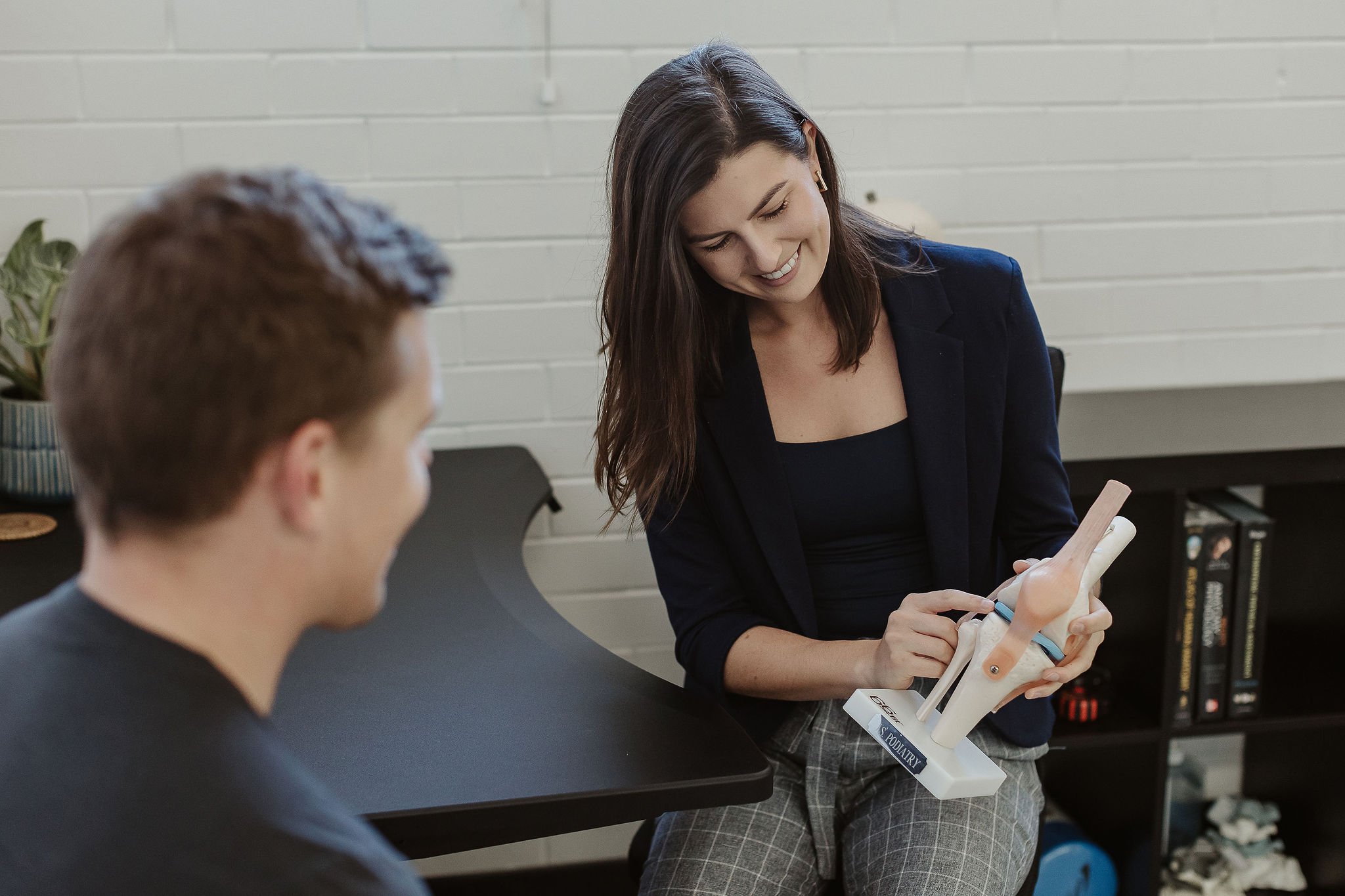
Biomechanical
Assessments
Whether you’re an athlete wanting to fine-tune your performance or you simply have a few nagging aches and pains, a biomechanical assessment can help pinpoint areas of concern. This comprehensive physical assessment looks at the way your bones, joints, muscles, ligaments and tendons interact as you move and can provide valuable diagnostic, therapeutic, and preventative benefits for complete musculoskeletal balance.
A biomechanical assessment is an invaluable tool for both therapists and patients in improving and maintaining health. This detailed analysis of your movement patterns, posture, and joint mechanics can provide considerable insight into underlying physical issues that may contribute to pain, discomfort, or injury.
What is a Biomechanical Assessment?
Biomechanical assessments are like a deep dive into the way your body moves and interacts with the world, from desk ergonomic assessments to running gait analysis and everything in between.
A biomechanical assessment takes a close look at your overall static and functional posture, the way your joints work, and the way your body moves beneath the surface. The assessment takes into account a range of movement factors and uses a combination of observation and high-tech 3D imaging to provide a detailed analysis of the health of your musculoskeletal system.
When we break down in detail what is a biomechanical assessment, it specifically looks at these areas:
Posture and alignment -By analysing the positioning of the body in static and dynamic states, practitioners will look for any musculoskeletal imbalances, joint stressors, and compensatory mechanisms within the body.
Dynamic movement - Using observational techniques, EOS postural/scoliosis scans, and 3D imaging, practitioners can analyse your range of motion, joint angles, leg length discrepancies, and movement patterns to assess any potential factors that may predispose you to certain injuries or ailments.
Muscle function and strength - Practitioners assess muscle strength and endurance to help identify areas of weakness or muscle imbalances.
The Benefits of Biomechanical Assessments
Biomechanical assessments can provide a strong foundation for developing effective treatment strategies, intervention plans, and corrective exercises to suit your unique body movements and enhance your overall physical health and performance. They do this by:
Assessing individual movement mechanics
Identifying underlying issues or problems
Providing in-depth and precise tailored diagnosis and treatment plans
Aside from providing targeted treatment strategies, these assessments can also help to optimise performance, especially for athletes, and can help ensure that your footwear is meeting your support needs.
What to Expect During the Assessment
When you arrive at Spine & Sports for your initial consultation or biomechanical review assessment, you will be warmly greeted by one of our experienced team. Your qualified therapist will guide you to a private room where you will complete your initial consultation. They will gather information about your current health and medical history and any specific aches and pains you may be currently experiencing.
After a verbal history is taken in the initial consultation, the biomechanical assessment will begin. It will include:
Physical assessment
You may be observed standing, sitting, or walking. Your therapist may check your range of motion for various joints such as the spine, ankles, hips, and knees to measure your range and flexibility, including any limitations you may be experiencing. Relevant orthopaedic tets and reflexes along with your movement will be analysed so your therapist can create a detailed record of your movement patterns.
Muscle Strength
A combination of resistance and special equipment may be used to test the strength of key muscles or muscle groups, particularly those around your areas of concern.
How Much Does a Biomechanical Assessment Cost
A biomechanical assessment is included in your initial consultation fee is an investment in your long-term health and can be an effective way of helping to prevent injuries. Fow existing patients, please book an extended consultation and your practitioner will have adequate time to complete a biomechanical assessment. The exact cost of this assessment will depend on the type and duration of the assessment.
Why Our Clinic Stands Out
We’re with you every step of the way. The experienced team of Chiropractors, Physiotherapists and Podiatrists at Spine & Sports are passionate about helping you achieve optimum musculoskeletal health and well-being. Enjoy our beautiful state-of-the-art facilities, cutting-edge biomechanical assessment technology, and our unmatched, personalised care. From your initial assessment to creating a detailed treatment plan, we look forward to helping you get the best out of your body each and every day.
Booking Your Biomechanical Assessment
By booking your biomechanical assessment with Spine & Sports, you’re taking the first step towards improving your musculoskeletal wellbeing and your overall health. Book your biomechanical assessment online or call our friendly team on (08) 9221 8458.
-
A biomechanical assessment is a snapshot and thorough analysis of the way your body moves, your posture, and your joint movements. It is completed by a qualified practitioner using a combination of observation of static and functional movements and imaging.
This assessment is used to create a treatment plan to improve and correct musculoskeletal health.
-
A biomechanical assessment takes approximately 30-50 minutes to complete.
-
Biomechanical assessments are highly effective at helping to diagnose a wide range of musculoskeletal issues and creating a targeted treatment plan to correct them. To discuss your specific circumstances, get in touch for more information.
-
Before your assessment, it’s a good idea to do the following:
Wear comfortable clothing or sportswear so you are free to move as needed
Ensure you’re hydrated
Bring any relevant sports equipment such as running shoes
Be prepared with your medical history and any concerns
-
The cost of a biomechanical assessment at Spine & Sports depends on the individual patient, and the type and duration of the assessment.

